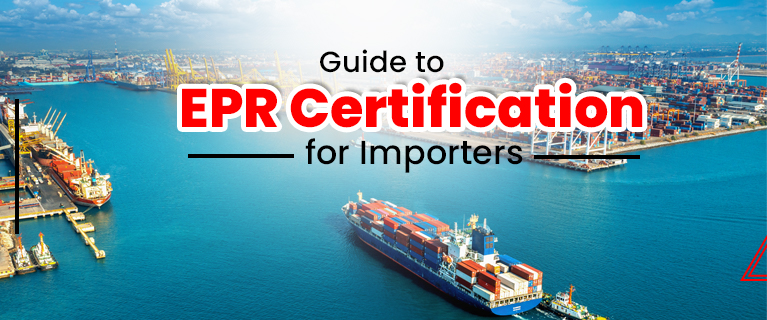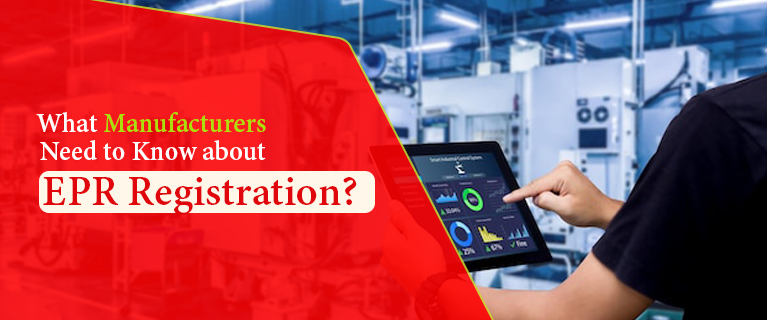Guide To EPR Certification For Importers
In an era of heightened environmental consciousness, businesses across the globe are increasingly adopting sustainable practices to minimize their impact on the environment. As part of this global movement, the concept of Extended Producer Responsibility (EPR) has gained significant traction. EPR certification for imports plays a pivotal role in ensuring that imported products adhere to environmentally responsible practices and align with the principles of a circular economy. In this blog, we will explore the significance of EPR certification for import and its role in promoting environmental sustainability in international trade.
Understanding Extended Producer Responsibility (EPR)
Extended Producer Responsibility (EPR) is an environmental policy framework that assigns the responsibility of managing a product's lifecycle, including its environmental impacts, to the producers. In the context of imports, EPR Certification requires the producers or manufacturers of imported goods to take responsibility for the products' entire lifecycle, from production to disposal.
The primary objective of EPR certification is to incentivize producers to design products with reduced environmental impacts, encourage recycling and recovery of materials, and promote a circular economy where resources are conserved and waste is minimized. EPR certification encourages producers to incorporate eco-design principles, develop efficient recycling and waste management systems, and ensure the safe disposal of end-of-life products.
The Significance of EPR Certification for Import
EPR certification for import serves as a crucial mechanism to ensure that imported products comply with sustainable production and waste management standards. By holding producers accountable for the environmental impact of their products, EPR certification for import incentivizes them to adopt eco-friendly practices and reduce the ecological footprint of their offerings.
The EPR Certification Process for Import
The EPR certification process for import typically involves the following steps:
Step 1: Assessment of Product Life Cycle Impact
Importers seeking EPR certification must conduct a comprehensive assessment of the product's life cycle impact. This includes evaluating the environmental impacts associated with raw material extraction, manufacturing processes, transportation, distribution, usage, and end-of-life management.
Step 2: Implementation of Sustainable Practices
Based on the life cycle assessment, importers need to implement sustainable practices to reduce the product's environmental footprint. This may involve using eco-friendly materials, adopting energy-efficient manufacturing processes, and ensuring efficient waste management and recycling systems.
Step 3: Compliance with EPR Regulations
Importers must ensure that their products adhere to the EPR regulations and policies of the importing country or region. This may include specific labeling requirements, recycling targets, or waste disposal guidelines.
Step 4: Third-Party Certification
To obtain EPR certification for import, importers may need to undergo an evaluation conducted by an accredited third-party certification body. The certification body assesses the importer's compliance with EPR standards and verifies the implementation of sustainable practices.
Step 5: Periodic Audits
EPR certification is not a one-time process; it requires continuous adherence to sustainable practices. Importers may undergo periodic audits by the certification body to ensure ongoing compliance.
Read Also This - Significance of EPR Registration for ImportersConclusion
EPR certification for import holds immense potential to drive sustainable and responsible practices in international trade. By holding producers accountable for the environmental impacts of their products, EPR certification encourages the adoption of eco-friendly practices, promotes a circular economy, and protects the environment.
Importers seeking EPR certification should conduct comprehensive lifecycle assessments, implement sustainable practices, and comply with the regulations of the importing countries. Third-party certification plays a crucial role in verifying compliance and bolstering the credibility of EPR-certified imports.
As the world moves towards a greener and more sustainable future, EPR certification for import becomes an indispensable tool in fostering environmental stewardship and creating a global economy that prioritizes the well-being of both people and the planet. Embracing EPR certification is not just a choice but a responsibility towards creating a better and more sustainable world for generations to come.




Comments
Post a Comment